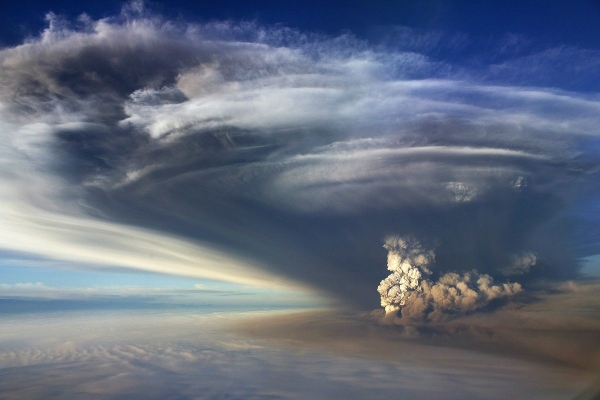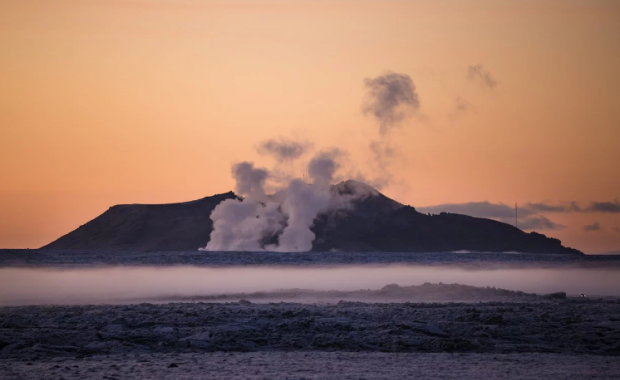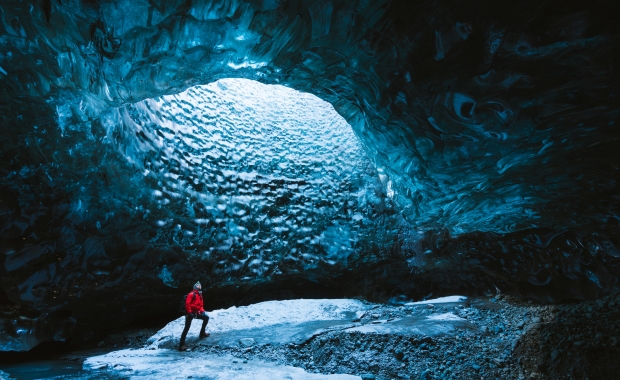A glacial outburst flood is underway from Grímsvötn volcano, one of the major subglacial volcanoes of Vatnajökull glacier. The ice cap covering the Grímsvötn caldera has dropped by 9 meters (30 ft) as the caldera continues to empty meltwater into Gígjukvísl river. The flood is expected to peak over the weekend. The flood is not expected to pose any risk to people or infrastructure.

Grímsvötn is a volcanic system located in the western part of Vatnajökull. It is believed to be Iceland's most active volcano, with more than 100 known eruptions since Iceland was settled in the 9th century. The system has erupted at least once every ten years in the past century. The latest eruption took place in 2011.
Glacial outburst floods
The central caldera of the Grímsvötn system is covered with thick ice of Vatnajökull glacier. During eruptions the magma melts the ice, revealing the volcano which hides underneath. Eruptions can therefore cause significant floods in the glacial rivers from Vatnajökull. Meltwater from Grímsvötn finds its way to the glacial outwash plains of SE Iceland, primarily Gígjukvísl river, one of the glacial rivers drivers cross on their way along the Ring Road in South East Iceland.
Grímsvötn also produce regular smaller glacial outburst floods caused by the release of meltwater created by the significant geothermal activity in the volcano. The geothermal activity melts the glacier, but the weight of the ice cap keeps the meltwater trapped in the caldera. When the water pressure becomes great enough it lifts the ice, allowing the water to flood out. This chain of events is usually relatively rapid, creating an outburst flood when the meltwater accumulated over the course of several years is released at the same time.
Geologists who spoke to the Icelandic National Broadcasting Service said the flood appears to be relatively small and there is no indication the flood will pose any risk to people, roads or other infrastructure. Travelers might, however, notice that the water level of Gígjukvísl will remain elevated over the weekend.
A glacial outburst flood is underway from Grímsvötn volcano, one of the major subglacial volcanoes of Vatnajökull glacier. The ice cap covering the Grímsvötn caldera has dropped by 9 meters (30 ft) as the caldera continues to empty meltwater into Gígjukvísl river. The flood is expected to peak over the weekend. The flood is not expected to pose any risk to people or infrastructure.

Grímsvötn is a volcanic system located in the western part of Vatnajökull. It is believed to be Iceland's most active volcano, with more than 100 known eruptions since Iceland was settled in the 9th century. The system has erupted at least once every ten years in the past century. The latest eruption took place in 2011.
Glacial outburst floods
The central caldera of the Grímsvötn system is covered with thick ice of Vatnajökull glacier. During eruptions the magma melts the ice, revealing the volcano which hides underneath. Eruptions can therefore cause significant floods in the glacial rivers from Vatnajökull. Meltwater from Grímsvötn finds its way to the glacial outwash plains of SE Iceland, primarily Gígjukvísl river, one of the glacial rivers drivers cross on their way along the Ring Road in South East Iceland.
Grímsvötn also produce regular smaller glacial outburst floods caused by the release of meltwater created by the significant geothermal activity in the volcano. The geothermal activity melts the glacier, but the weight of the ice cap keeps the meltwater trapped in the caldera. When the water pressure becomes great enough it lifts the ice, allowing the water to flood out. This chain of events is usually relatively rapid, creating an outburst flood when the meltwater accumulated over the course of several years is released at the same time.
Geologists who spoke to the Icelandic National Broadcasting Service said the flood appears to be relatively small and there is no indication the flood will pose any risk to people, roads or other infrastructure. Travelers might, however, notice that the water level of Gígjukvísl will remain elevated over the weekend.







